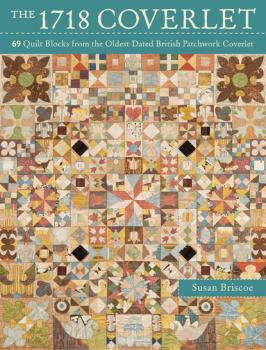Susan Briscoe
Список книг автора Susan BriscoeThe Book of Boro
A collection of boro-inspired projects and techniques which celebrates this traditional Japanese textile and its relevance to the modern sewer and quilter. Learn about the history of boro and how it is being revived for a new audience using contemporary fabrics including denim, linen and shibori tie dye as well as sashiko and other embroidery stitches. The word boro comes from the Japanese boroboro meaning something tattered or repaired. It refers to textiles that have been mended or patched together for utilitarian, not decorative, purposes to make the fabric stronger and warmer, and to mend torn and threadbare areas. The techniques section includes a short stitch directory with traditional stitches (running stitch and applique) and contemporary stitches (herringbone stitch, blanket stitch, chain stitch and whipped running stitch). Other techniques include instructions on improvisational patchwork; applique: raw, turned edge and reverse; darning techniques and methods for distressing and ageing fabrics to achieve an authentic boro finish.
The Ultimate Kogin Collection
Discover the beautiful Japanese pattern darning technique kogin and how it can be used to create stunning stitched and quilted projects. Kogin is a variation of the popular Japanese embroidery technique sashiko and is rapidly becoming as popular as its 'big sister'. Japanese embroidery expert, Susan Briscoe, has compiled a collection of over 60 pattern charts – kogin is a counted embroidery technique – and 12 accompanying projects to create The Ultimate Kogin Collection, following on from her previous title The Ultimate Sashiko Sourcebook. The projects range from small and very accessible items such as simple greetings cards and coasters to larger projects including wall hangings and table runners.
Quilt Essentials: Japanese Style
A collection of Japanese style quilting projects by Susan Briscoe which really captures the essence of Japanese quilting style. Includes step instructions for creating Japanese style quilting projects including throws, cushions and quilts. The projects feature traditional Japanese techniques, designs and fabrics.
Simple Sashiko
Learn the big stitch technique of Sashiko with these 8 simple sashiko sewing projects. Big stitches are used to create stunning, geometric patterns and texture. This collection includes 8 home decor patterns including coasters, cushions, wall hangings, bag and greetings cards. Features content previously published in The Ultimate Sashiko Sourcebook and Japanese Sashiko Inspirations .
The 1718 Coverlet
Quilters will be delight in this book featuring the earliest dated piece of British patchwork–the 1718 coverlet. The 1718 coverlet is the earliest known British patchwork that has a date worked into the piece and forms a benchmark against which all other rare survivors of early 18th century patchwork can be compared. Step back in time and learn how to recreate each of the stunning 69 blocks by just following the detailed instructions offered in the book, which you can then use individually or together to make your own replica coverlet. A fabulous historical quilting reference the coverlet was made using the Mosaic patchwork technique–a time-consuming method requiring the use of paper for templates. Some of the paper templates still remain in the coverlet and provide tantalising glimpses of printed and hand written text including bills, letters and printed text as well as hand drawn designs for the quilt.
The Ultimate Sashiko Sourcebook
Sashiko, the traditional Japanese technique of needlework quilting, uses simple running stitch to create beautifully decorative patterns ideal for patchwork, quilting and embroidery. Sashiko (pronounced shash-ko) means 'stab stitch' and refers to the small running stitch that is worked to build up distinctive decorative patterns, of which there are hundreds. The book begins by exploring the origins of the technique to strengthen clothes and to make them warmer. Getting Started describes everything you need to begin stitching, including selecting suitable fabrics and threads, marking out patterns on the fabric, as well as the stitching technique itself. Ten project chapters show how easy it is to use sashiko patterns to make beautiful items for the home. The sashiko patterns are described in step-by-step detail in the pattern library, showing you exactly how to achieve each individual pattern with ease. Finally a gallery of work by contemporary Japanese textile artists provides extra inspiration.






